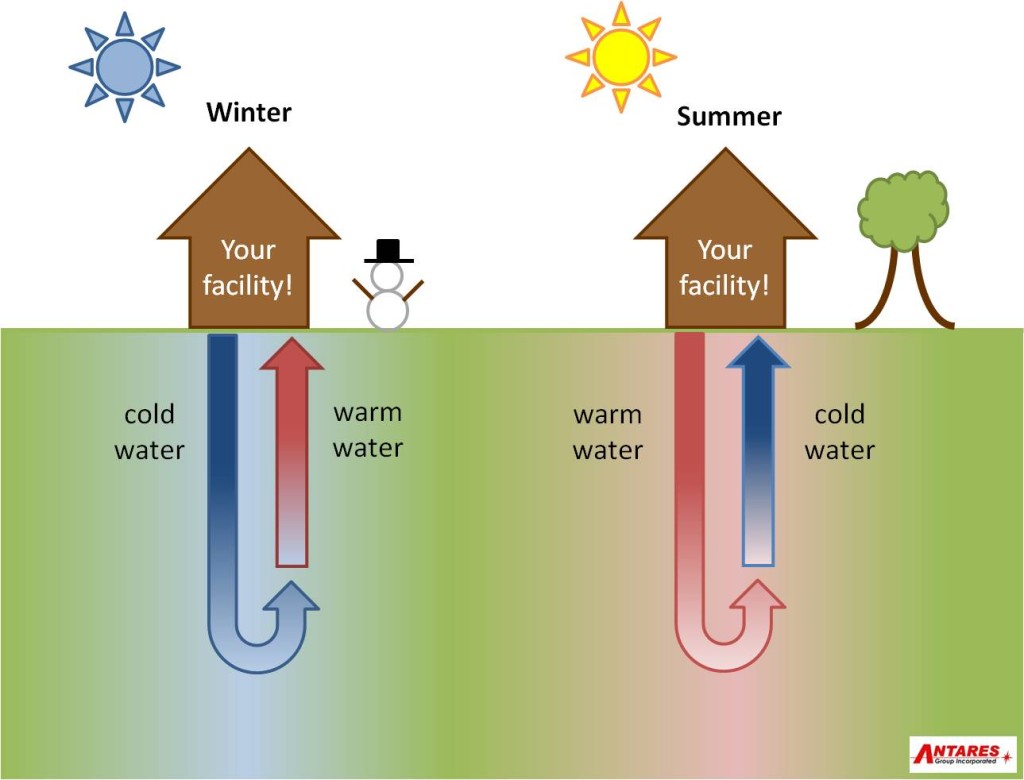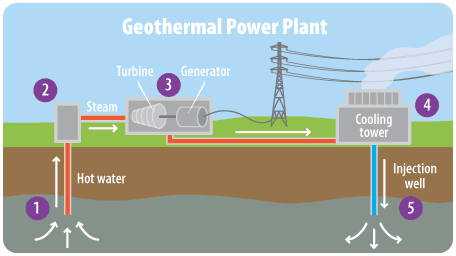Have you ever heard the term ‘geothermal energy’ and wondered what exactly that is? With the current green energy movement in full swing, it’s easy to get lost in a sea of buzzwords and half-explained terms. Lets start with the basics.
What is Geothermal Energy?
- from the Greek words geo, or “earth,” and therme, meaning “heat.”
- heat derived below the earth’s surface that can be harnessed to generate clean, renewable energy.
- emits little or no greenhouse gases — all while requiring a small environmental footprint to develop.
(Want a more detailed explanation? Click here.)
So How Can We Use Geothermal Energy?
There are three methods for capturing and converting the heat beneath the earth’s surface.
- Direct Use of Geothermal Heat – In areas where hot springs or geothermal reservoirs are near the earth’s surface, hot water can be pumped directly into homes and buildings to heat them. This geothermal water is pumped through a heat exchanger that transfers the heat from the water to the building’s heating systems. The water is then returned to the reservoir to be reheated and recirculated.
- Geothermal Heat Pump – A few feet beneath the earth’s surface, the soil and water stays a constant 50 to 60 degrees fahrenheit year-round. This steady temperature can be used to heat or cool buildings, depending on the season. Fluid is circulated in series of pipes, called a loop, beneath the surface. It is then pumped into a building, where an electric compressor and heat exchanger pull the heat from the pipes and send it via a duct system throughout the building. In the summer, this process works in reverse. Water moves through the house, collecting heat, and then takes that heat beneath the earth’s surface where the water is cooled and recirculated.

- Geothermal Power Plants – Hot water and steam from deep underground can be piped up through underground wells and used to generate electricity in a power plant. Electricity is generated in these plants when steam created by heat beneath the earth’s surface is used to spin turbines in the facility. Three different types of geothermal power plants exist: Dry steam plants, Flash steam plants, and Binary Cycle steam plants.

(For more information on each type of geothermal power plant, click this link.)
Viability for Pittsburgh?
Obviously a correctly implemented geothermal system has the potential to seriously reduce carbon emissions and provide a very cheap, continuous source of energy. So why haven’t we implemented them all over the place by now?!
The fact of the matter is, introducing a geothermal system into an already built environment can be quite costly. Existing infrastructure has to be dug up in order to make way for the underground equipment necessary to the process. Ground composition and topography can also be a source of struggle when it comes to this energy method. With all its roads, hills, and rivers, it might be some time before we see geothermal energy at work in the Pittsburgh area.
Can’t get enough about this incredibly hip form of energy? Check out these Geothermal Fun Facts!
- The United States has more geothermal capacity than any other country, with more than 3,000 megawatts in eight states.
- Eighty percent of this capacity is in California, where more than 40 geothermal plants provide nearly 5 percent of the state’s electricity.
- In Iceland, nearly every building in the country is heated with hot spring water. In fact, Iceland gets more than 50 percent of its energy from geothermal sources.
- The amount of heat within 10,000 meters (about 33,000 feet) of Earth’s surface contains 50,000 times more energy than all the oil and natural gas resources in the world.
- In the first century AD, Romans conquered Aquae Sulis, now Bath, Somerset, England, and used the hot springs there (direct use of geothermal heat) to feed public baths and underfloor heating.
Sources:
- http://www.ucsusa.org/clean_energy/our-energy-choices/renewable-energy/how-geothermal-energy-works.html#.VIJf9da7lKp
- http://science.howstuffworks.com/environmental/energy/geothermal-energy1.htm
- http://energy.gov/science-innovation/energy-sources/renewable-energy/geothermal
- http://epa.gov/climatestudents/solutions/technologies/geothermal.html – Image credit
- http://antaresgroupinc.com/basics-of-ground-source-heat-pump-technology-part-1/ – Image credit